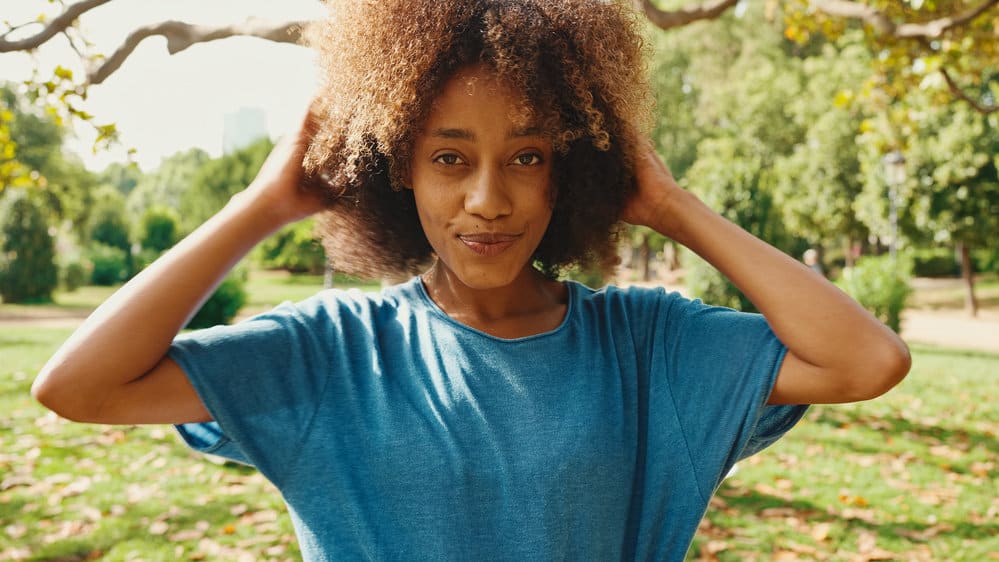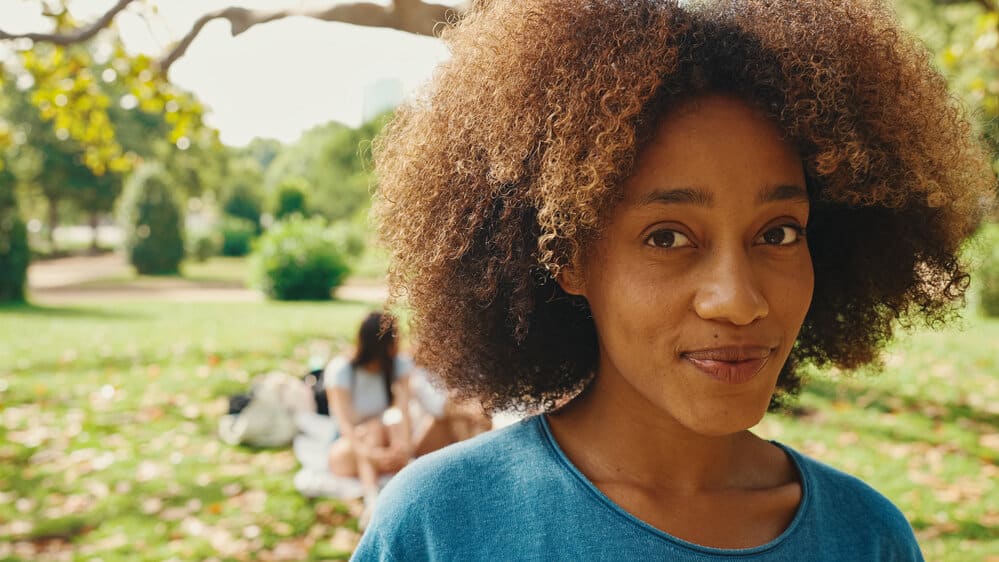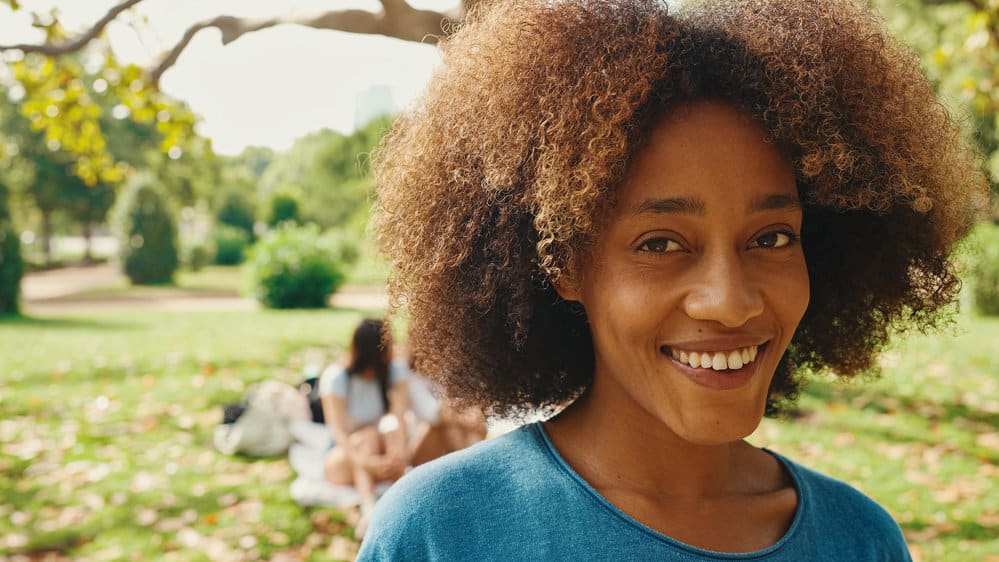
If you’ve noticed that some of your hair strands are crinkly, you may be wondering what the culprit is. Several factors may be at play, and knowing the cause can help you find a solution. In this article, we will discuss the causes of crinkly hair and how to fix it. Let’s get right into it!
Table of Contents
- 1 Why Are Some of My Hair Strands Crinkly?
- 2 10 Ways to Fix and Prevent Crinkly Hair
- 2.1 1. Moisturize, Moisturize, Moisturize
- 2.2 2. Use a Heat Protectant
- 2.3 3. Avoid Over-Processing
- 2.4 4. Use Cooler Temperatures When Styling
- 2.5 5. Always Be Gentle With Your Hair
- 2.6 6. Protect Your Hair From Sunlight and Pollution
- 2.7 7. Don’t Neglect the Ends
- 2.8 8. Detangle Your Hair Appropriately
- 2.9 9. Don’t Overdo It on the Shampooing
- 2.10 10. Consider Changing Your Diet
- 3 How Long Does It Take Crinkly Hair to Go Away?
- 4 How to Disguise Crinkly Hair
Why Are Some of My Hair Strands Crinkly?
To understand why your natural hair texture has gone wonky, let's get into the structure of a hair strand. Each strand is made up of three parts: the medulla, the cortex, and the cuticle.
The medulla is the innermost layer, and it’s primarily composed of air. The cortex is the middle layer, composed mainly of keratin. It’s greatly affected by the condition of the outermost layer - the cuticle.
The cuticle is made up of overlapping scales, which protect the inner components of the hair and control moisture balance. When your hair's inner and outer structures are damaged - namely the cortex and the cuticle - it can result in a crinkly, wiry texture that can make styling difficult.

Several factors can lead to crinkliness, and they include:
- Over-processing with chemical treatments - Whenever you color, straighten or perm your hair, you subject it to chemicals that can damage the hair cuticle and even alter the cortex. This damage manifests itself in the form of dry, brittle hair that is more susceptible to breakage and texture changes.
- Heat damage from styling tools - Heat styling tools (e.g., flat iron) can get up to extremely high temperatures - 450 degrees is usually the maximum. Over time, exposure to heat from styling tools such as curling irons and blow dryers can burn off your hair cuticle and cortex. When used excessively, these tools can damage your hair to the point that some strands appear shriveled up and crinkly.
- Environmental stressors like UV exposure and pollution - The sun and pollution can wreak havoc on your hair, causing it to become dry, brittle, and frizzy. In extreme cases, these environmental stressors can cause your hair color to fade.
- Overstretching the hair when styling - This is often the case with tight hairstyles such as braids, top knots, and other styles that require the hair to be sleek. Pulling your hair too tight puts excessive strain on the hair shaft, which can lead to the crinkly look you're seeing.

10 Ways to Fix and Prevent Crinkly Hair
If you are experiencing crinkly hair, your first instinct may be to panic. But do not worry - there are many ways to fix the problem and get your hair back to its former glory.
Here are a few tips:
1. Moisturize, Moisturize, Moisturize
One of the leading causes of crinkly hair is dryness. If your hair lacks moisture, it will be more prone to becoming stretched out and brittle.
Use a good quality moisturizing shampoo and conditioner, and try using a deep conditioner once a week. You can also apply a leave-in conditioning treatment to your hair before styling.
2. Use a Heat Protectant
Spritz on a heat protectant when you can't avoid the heat tools. This will create a barrier to protect your hair from the damaging effects of heat exposure.
Just know that heat protectants can only do so much - the best way to avoid heat damage is to cut back on your use of heat styling tools.

3. Avoid Over-Processing
Limit the number of times you color, straighten, relax or perm your hair each year. Every time you put your hair through a chemical process, you weaken it and make it more susceptible to textural changes from damage.
The less chemical processing your hair is put through, the better. After cutting back on the chemicals, you may notice that your strands are no longer crinkly.
4. Use Cooler Temperatures When Styling
When you use a blow dryer, try using the cool setting instead of high heat. And if possible, air dry your hair most of the time (if not exclusively).

5. Always Be Gentle With Your Hair
Never braid your hair too tight, and avoid putting too much strain on your strands when styling. This can be easier said than done since braids are usually supposed to be sleek. But for the health of your hair, it's necessary.
Here are some signs that your style is too tight:
- Your head hurts.
- You need to use grease along your hairline after braid installation.
- You see little red bumps on your scalp.
6. Protect Your Hair From Sunlight and Pollution
Wear a hat or scarf when outside in the sun. Also, use a quality clarifying shampoo and conditioner strong enough to eliminate the pollutants you may have come in contact with.

7. Don’t Neglect the Ends
The ends of your hair are the oldest and most fragile part of your strands, so they're more likely to appear crinkly than the rest of your hair.
Be sure to give them some extra TLC by regularly trimming them and focusing your deep conditioner on them whenever you do a treatment.
8. Detangle Your Hair Appropriately
Improper detangling can easily overstretch and snap your strands. Avoid this by only detangling your hair with a wide-tooth comb when it's wet and saturated in a slippery hair product.
And be sure to start from the bottom and work your way up. Not only will your detangling sessions be quicker this way, but you'll also avoid those dreaded crinkles.

9. Don’t Overdo It on the Shampooing
Too much shampooing can strip your hair of its natural oils, leading to dryness and frizz. Aim to shampoo your hair only 2-3 times a week and use a super hydrating shampoo.
Follow up with a conditioner to help replenish the lost moisture. Well-moisturized hair is less likely to become overstretched and damaged.
10. Consider Changing Your Diet
Believe it or not, what you eat can impact your hair's health. Include healthy fats, proteins, and vitamins in your diet. These nutrients are essential for keeping your hair strong and resilient. A healthy diet won't magically make your crinkly hair go away, but it can help improve your strands' overall condition.
How Long Does It Take Crinkly Hair to Go Away?
There is no definitive answer to this question since it varies from person to person. In general, however, you can expect to see a noticeable difference within a few weeks to a couple of months. If you are consistent with your treatment regimen and take good care of your hair, your hair will show it.

How to Disguise Crinkly Hair
It could take some time to see a noticeable difference in the appearance of your crinkly hair. To help you make it through, here are some ways you can disguise your crinkly hair.
1. Use a Curl-Defining Cream
Apply a small amount of curl-defining cream to your damp strands, and then use a diffuser to dry your hair. The cream will help to smooth down your hair and define your curls.
2. Try a Blowout
If you have the time and patience, you can try doing a blowout at home. Start by applying a heat-protectant serum to your damp hair, and then use a round brush or paddle brush to dry your strands. Be sure to keep the brush moving so that you don't overheat any one section of your hair.

3. Use Headbands or Scarves
Headbands and scarves are a great way to disguise crinkly hair. Simply put your hair up in a high ponytail or bun, and then put on a headband or scarf. You can also try putting your hair in two French braids and then wearing a headband on top.
4. Use Bobby Pins
If you have a few errant strands that just won't stay in place, try using some bobby pins to keep them in place. Put the bobby pins in the direction that you want your hair to lay, and then gently press them into place.
Now you know that crinkly hair is often caused by damage, which can be challenging to repair. But with time and patience, you can get your hair back to a healthy, strong state. We hope that this article helped answer your questions about crinkly hair, and we wish you the best of luck in your journey to smoother, more beautiful hair!




